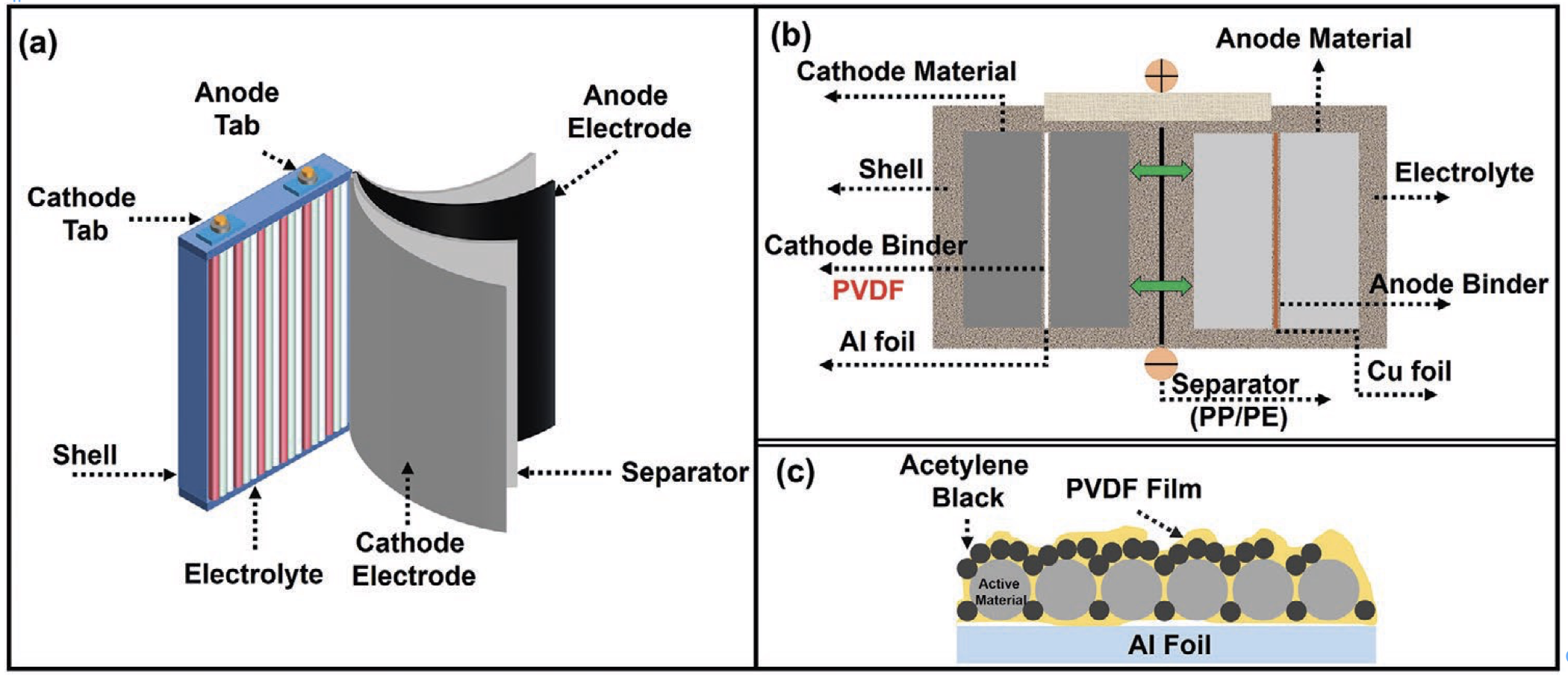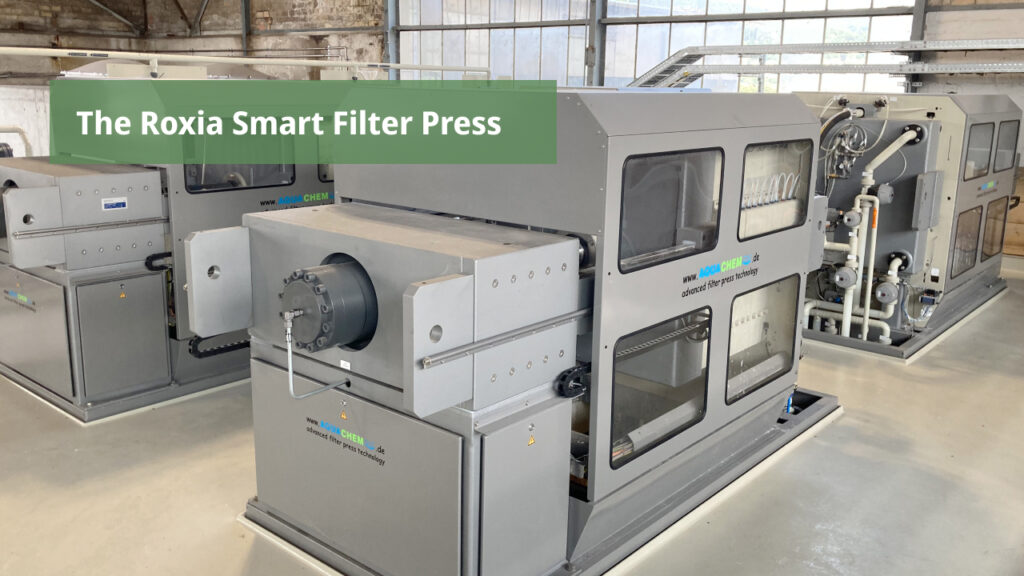In the many lithium ion battery (LIB) plants that I have visited, one critical area of concern is solid-liquid separation safety in manual operations. After all, a LIB is, in reality, a small chemical plant. The detailed structure is as follows:

Figure 1. Structure diagrams of LIBs . a) Main components, b) Internal structure and c) Structure of cathode materials and Al foil (Yellow coating represents PVDF film). Reproduced from Global Challenges 2023, 7, 2200237, © 2023 The Authors. Global Challenges published by Wiley-VCH GmbH.
Operators and process engineers must be experts in all the areas of the LIB life cycle to safely produce the battery materials and chemicals. The work begins with mining from spodumene and clays or extraction from ponds and geothermal reservoirs. Continuing, anode and cathode materials are produced as well as the electrolytes. Later, after the LIBs are manufactured, a circular approach takes into consideration the production scrap and end-of-life (EOL) batteries for recycling. Recycling includes the hydrometallurgical processes to produce recycled battery-grade materials.
In each step above, the list of chemicals to manufacture as well as recycle is long and complex. The process also involves other solids and solvents for reactions / precipitation, purification, and drying. Safety is a priority at every stage.
Keeping LIB Processes Safe with New Solid-Liquid Separation Technology

Always looking for new ways to help clients, I have recently encountered an improved chamber filter press. Roxia’s Smart Filter Press offers full containment and continuous automated operation with improved operator safety.
Full Containment
The “fully-enclosed” design of the Smart Filter Press (SFP) eliminates operator exposure to solvents and solids during manufacturing. The plate stack is leak-proof due to o-ring seals between the plates and pressure tested to confirm the sealing. A ventilated housing fully encloses the entire plate stack and adds additional protection when the filter discharges the cake. The housing can be connected to a gas outlet for a negative pressure operation to pull away solvents or condensation during higher temperature processes.
Continuous Automated Operation
To begin, before every cycle, plate pressure tightness is tested as well as the condition of the membranes. The continuous pressure differential is also monitored during solid-liquid filtration, cake washing and squeezing/blowing. Finally, for cake discharge, plate shaking, and air pressure are used, from behind the cloth to gently dislodge the cake. A cake conveyor or container can be included as well to remove the cake from the enclosure without opening.
Operator Safety
Roxia’s industrial filter is not only designed with many mechanical safeties, but also features digital instrumentation for “smart” operation. The SFP has many diagnostic tools for slurry and filtrate quality monitoring, process pressure sensing, plate and membrane integrity and overall process operation for feeding, washing, membrane pressing and cloth/enclosure cleaning. Fully incorporating Industrial Internet of Things (IIoT) connectivity into the SFP’s design and operation supports remote management and monitoring access and enables preventative maintenance, which further benefit operator safety.
Investigating technologies to improve operations
Whether it is for LIB or another chemical process, P&ID is always exploring new technology innovations for our customers. P&ID understands the entire lifecycle, and we’re here to help. Contact me to work together to brainstorm a possible solution using existing marketplace technologies or develop a new, disruptive approach. For more information on the SFP, including design details and sizing, please contact Roxia.

